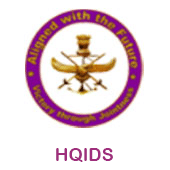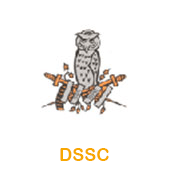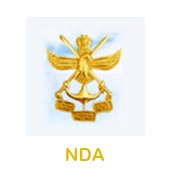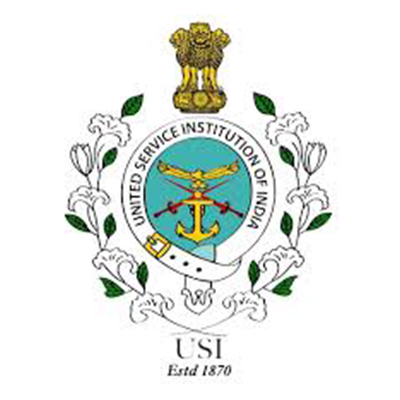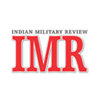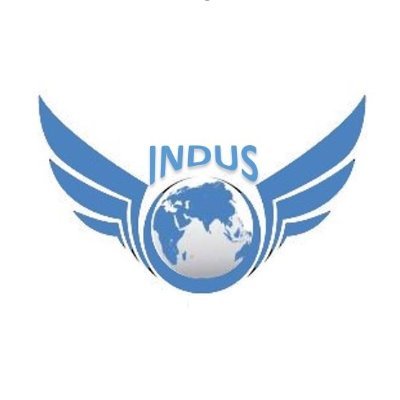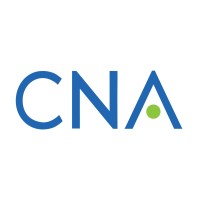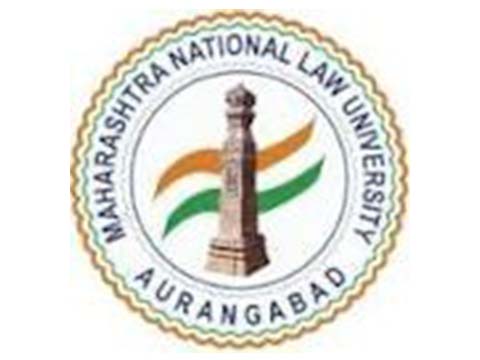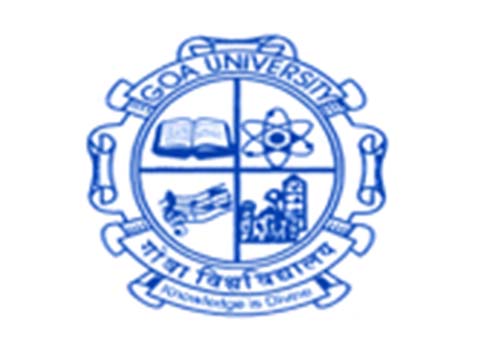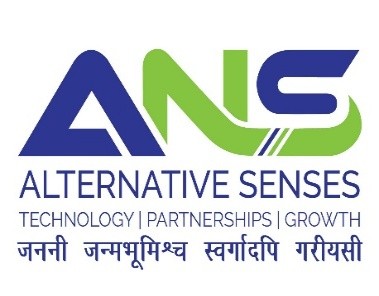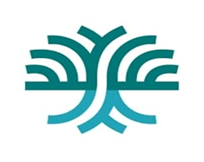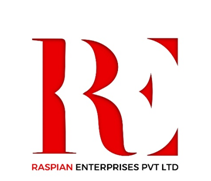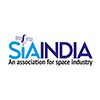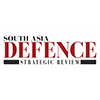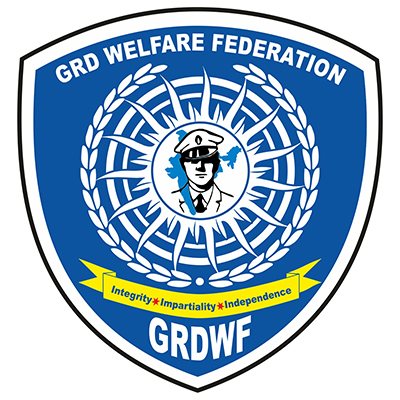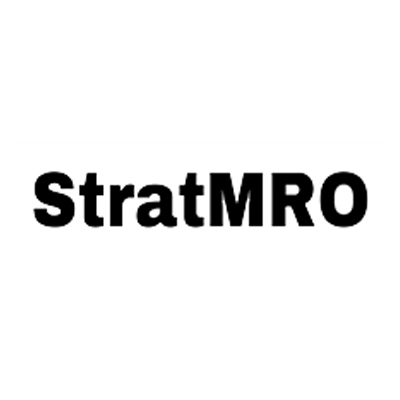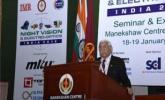
Seminar | 21-Feb-2019
Seminar | 17-18-jan-2019
PROCEEDINGS OF SEMINAR ON NIGHT VISION AND ELECTRO OPTICS INDIA 2019 17-18 JAN 2019
BY | COL ARVINDER SINGH
DAY 1: (17 JAN 2019)
INAUGURAL SESSION
1. Welcome Address. Lt Gen Vinod Bhatia, PVSM, AVSM, VSM, (Retd), Director CENJOWS, welcomed the chief guest and all participants in the seminar. He said that the aim of the seminar was to give a common platform to all stakeholders in building night vision capability of the Armed Forces and fruitful ideas have come to the fore during the previous seminars on the subject. He emphasised that whoever controls the night, wins the battle. We need NVDs to match our operational requirement. Interaction with troops on the frontline has revealed that Night Vision Devices are lacking both in terms of quantity and quality. Along our northern borders China has invested heavily in NVDs, similarly we have to increase our surveillance and upgrade our night vision capabilities and ensure that we secure our borders. He stressed that despite the high cost, these devices are required urgently for achieving optimal surveillance capabilities and hoped that the soldier would get the required night vision capabilities that he needs to guard our land borders, air space and the long coast line. At the end of the seminar he was looking for implementable, pragmatic and cost-effective way forward and recommendations.
2. Inaugural Address. Vice Adm Atul Kumar Jain, AVSM, VSM, DCIDS (Perspective Plg & FD), HQ IDS informed the house that Night Vision capabilities was single mismatch quoted in Operation Desert Storm. The importance of NVDs has been also evident in various other operations world over including surgical strikes carried out by our forces. Armed forces face operational situation daily and hence there is huge requirement of NVDs. Though huge budget has been catered for this but there are procurement limitations due to high cost of imported equipment. Apropos, there is need for home grown technology and multipronged approach to have this technology with armed forces. Given the operational requirements of armed forces, we need vibrant R& D and indigenous technology in the country.There is need for infusion of investment and technology. Industry and armed forces need to extractmaximum from this seminar to find vibrant solutions for Make in India.
3. Keynote Address. Lt Gen S K Upadhyay, AVSM, SM, VSM, MGO, Army HQ informed the house that there was no dispute regarding requirement of Night Vision devices. The question is how fast we can move forward and replaces our existing equipment, which is a big challenge.Most of MGOs budget is consumed by Ordnance Factories and DPSUs and this leaves only about 4% of funds for procurement by army. DPM mandates the MGO to procure from DPSUs, but this needs to change nowas the country’s private industry has become technically advanced, especially in the field of NVDs. He emphasised the need of level playing field for all manufacturers. Night Vision devices are not produced by DPSUs and Ordinance factories. Hence, the requirement has to be met by private players. DPSUs are monopoly sellers in most of the defence items and Armed forces are monopoly buyers of these items, as there is no market of these items in civil stream. He brought out that technology was changing so fast that within few years of procurement the item becomes obsolete. We need equipment which has value for money and we have to find resources for humongous requirement of Night Vision Devices. Hence, we need to prioritize sequence and plan our procurement. We need to keep pace with our requirement as modernization of armed forces was the need of the hour.
4. Theme Address. Lt Gen SS Mishra, VSM, DG Infantry, Army HQ said that this seminar is a place where all stake holders are assembled under one roof to discuss various challenges regarding procurement of NVDs and electro optics in armed forces. He emphasised that armed forces if equipped with NVDs will be at great advantage in both conventional and non-conventional warfare. He gave example of OP Desert storm where US showed supremacy in NVDs which resulted in their success. Now other countries have caught up, specially our advisories, hence we also need to catch up. Better resolution and improvement in technology have changed dynamics of operations. Thermal imagings, density, weight pixel size of NVDs have improved further. In Indian context we are continuously in combat due to proxy war by our advisories. Large numbers of Infantry and RR battalions are deployed on LC/CI environment. Hence; we need NVDs throughout the year. Army commanders have been empowered to provide this equipment to various units and formation. We are in process of equipping all our forward line troops with night vision sites. Various types of NVDs are force multiplier for the armed forces. Few decades back surveillance of battle field was a tactical level issue but now it has moved to the operational level. Also, war fighting has largely shifted to non-conventional operations and this necessitates a modification in surveillance philosophy. We now need to equip soldiers with night vision from sub tactical level operations to operational and strategic levels.
5. Industry Perspective. Col KV Kuber, Director Defence and Aerospace, Ernst& Young released EY- IMR report on night vision devices and electro optics. He said that all industries globally are witnessing a fast-paced technology driven transformation and the aerospace and defence sector cannot be any different. The nature of warfare has so evolved that imagery now plays a critical role in the decision-making processes. Electro optics is the equipment which source, detect and control light and their application are comprehensive across defence and homeland security sectors. While highlighting the importance of NVDs market to the defence forces, the speaker proposed creation of a Centre of Excellence for night vision devices. He also emphasised that procurement process should consider both L1 and T1 vendors to ensure quality products and vendors, who have the capability to provide the said equipment and technology.
6. Industry Perspective. Mr Arvind Lakshmikumar, CEO, Tonbo Imaging, highlighted the flaws in procurement procedure by giving various examples and case studies of single vendor and lacks of proper specifications which results in problems in procurement of latest technology. He informed about achievements of his company and said that his equipment has got ample field experience as it is being sold in 25 countries. They have invested 250 crores on R&D on night vision systems. He said that Tonbo Imaging had gained a lot of perspective on the requirements of army through first hand interaction and this needs to translate into product development. He highlighted that the ToT route may not be ideal as it does not cater for evolving technology and success in this area will only be achieved once basic fundamentals are strong. He informed that Tonbo industries is trying to incorporate these fundamentals into their night vision technology development.
SESSION -1
EMERGING TECHNOLOGIES
7. Update on SCD’s Roadmap. Mr Kobi Zaushnizer, SCD, Speaker gave an overview of his company. He informed that the company has its HQ in Israel and having a turnover of 160 million $, with a proven 40 years of operational experience. The company is leader in cooled and SWIR detectors worldwide with significant world presence. Its products have main market in defence, commercial and space. He briefed about his company’s mission, products ranging from low SWAP to high end with one stop shop across all IR spectrum. He showcased videos of high-performance thermal imaging device (SPARROW). He also showed videos of driver vision enhancement on moonless night giving SWIR Imager. He highlighted that the company was developing technology in house and was not dependent on any other country. Though it is selling worldwide, India is one of the most important customers of SCD. The products of SCD are all weather, have long detection range, are dismountable from main platform, usable in dual role, have low weight, long operating time, low maintenance requirements and have a reduced cost of ownership.
8. Technology Talk. Mr Arvind Lakshmikumar, CEO, Tonbo Imaging, He gave an overview of his company and covered evolution of electro optics system, computational imaging by providing a closed loop control between sensor data acquisition and data processing. He said that they are making effective use of software to overcome hardware inadequacies. He explained R& D of his company in computational imaging. He informed that exponential growth in sensor technology and knowledge about current approaches to imaging had led to development of high quality NVDs. He enunciated that they were producing highly accurate, reliable and light weight night vision devices with enhanced ranges. He further showcased some NVDs developed by Tonbo Imaging.
9. Night Vision Systems by Alpha- Elsec. Col Sunit Kumar Nijhawan. He gave an overview of Night Vision systems by Alpha- Elsec. He said that his products gave solutions of all spectrums and showcased various types of detectors with their advantages and disadvantages. He gave a brief about various types of uncooled weapon sights and uncooled multifunctional sights and explained their main features. He also highlighted the main advantages of 3rd generation thermal systems. He also stressed on the need for timely induction of sensors into the Armed Forces. He then showcased some products of the company.
10. Tata A&D: Technologies and Solutions in EO Domain. Mr Vinod Yadav. The speaker gave an overview of Tata group and its global customer base. He showcased robust program portfolio of his company. He briefed about optronic infrastructure created by the company in thermal imaging, image intensifier (manufacturing and testing). He showed total EO product line and systems at a glance both uncooled and cooled T1 systems. He also gave a way forward on R& D of his company.
11. Uncooled Sensors & Replacement of Image Intensifiers. Mr Raj Chodankar, RRP S4E Innovation. The speaker gave an overview of uncooled sensors and replacements of image intensifiers. He informed his company is an electro optic company having design as their main strength. He gave the vision and way forward of his company. He said that pillars of strength of his company are his technology providers, ITI Bangalore, on board advisors, associate companies, investors and customers. He said that S4E Innovation is fully involved in Make in India.
SESSION -2
NVD REQUIREMENTS
12. Infantry Requirements. Col Amitoz Singh, Col Infantry 8, DG Inf, Army HQ. The officer covered the role and challenges of Infantry and battlefield transparency. He gave the vision of future of infantry soldiers as far as equipment is concerned which also includes Night Vision devices. He gave the requirement of night vision devices and optical electronic devices for infantry soldiers and infantry sub units. He also illustrated sub unit level requirements of weapon sights (both TI and TII) and surveillance devices and future upgradation of infantry soldiers.
13. Artillery’s Requirements. Brig RS Raghav, Brig (LRVs, RPAs &Ops), DG Arty, Army HQ. The officer covered operational dynamics and peculiarities of Artillery and also gave existing capabilities and challenges of NVDs held with Artillery. He covered in detail the challenges regarding ambient light & eye fatigue, foliage penetration, weather condition and maintenance aspects of night vision devices. He emphasised the desired capabilities of night vision devices of Artillery in detail.
14. Air Force Requirements. Gp Capt AP Deshpande, VSM, Directorate of Ops (Transport & Helicopters). The officer covered the requirements of night vision devices of Air Force. He gave an overview of the night operations in IAF and derived the NVD requirements specifically for helicopters. He covered counter surface force operations and support operations for helicopters, justifying requirements of night vision devices. He also gave performance comparison of Generation 1, 2, 3 and 3+ night vision devices and covered various system design characteristics. He elaborated about the requirement of night vision devices of Generation 3 and above and emphasised that they should have high FOM, good visual acuity, auto gated reduced halo, integrated display of parameters, light weight, should be integrated with helmets, should have good quality mounts, have weight balanced and should be easily maintainable.
DAY 2: (18 JAN 2019)
SESSION 3
CHALLENGES IN COMBAT OPERATIONS
15. Mechanised Forces in Night Operations. Brig Amit Loomba, Brig (Armd Corps), DG Mech Forces. He brought out the glorious past, dominating presence and challenging future of the tank. He deliberated on the question that whether today the technology should drive the tactics or it should be other way around. He brought the recommendations of empowered committee in year 2012 regarding night enabling of armed forces and progress made by Armoured Corps till now. He informed the gathering about the night fighting capability of various platforms i.e T-90, T-72, MBT Arjun & BMPII. He brought out the additional requirements Armoured Corps was looking in night fighting capability. He concluded that Armoured Corps not only require the freedom and flexibility but also the capability of manoeuvre in the night and carry out operations in the night for which latest technology night vision devices are required. It would be better if this technology is indigenous.
16. Enhancing Infantry Operations by Night. Brig Shailendra Singh, Brig Infantry B, Infantry Dte, Army HQ. He brought out that recently enemy is causing casualties to own troops at night by snippers. Similarly, in Northern and Eastern borders there are vast inhabited land which needs to be monitored both during day and night by the devices and technology. NVDs are great force multipliers over there. He gave an update on present state of procurement of various weapons for infantry including Assault rifle and Carbine. He briefed that future operational environment will be short, swift and intense. It will be information and network centric having hybrid threats. There is requirement of dominance in time, space and force for decisive victory. He also briefed about the dynamics of night operations in counter insurgency environment wherein the high mental stress a soldier goes thru. Hence, there is requirement to enable the soldier at night. He brought out various challenges for infantry which includes situational awareness, requirement of surveillance devices for bad weather, effective command and control and navigational equipment. He said that soldier without night fighting capability may end up fighting blind folded. The speaker emphasised that infantry modernisation domain should be in surveillance and target acquisition, lethality, mobility, survivability and sustenance. So, the efforts should be made on night enabling of all infantry weapons. The NVDs required by the infantry should have common power bank having high endurance, should be stand alone devices, all weather surveillance capable and should have integrated features like GPS, LRF and ballistic computer.
17. Challenges in Border Management at Night. Mr Aseem Vyas, DIG (SIW), HQ BSF. The speaker gave a brief introduction about the challenging terrain at international boundary with Pakistan and Bangladesh where BSF is operating. He also brought out the challenges of border management at night which includes repair and maintenance of electro optical devices, deficiency of thermal and night vision devices and ineffectiveness of NVDs in foggy weather. He brought out that there was dependency of major spare parts like sensors, multilayer PCBs and OLED from foreign vendors. He emphasised on the need of developing R & D for major spare parts of NVDs through ‘Make in India’ programme.
18. Challenges in Night Operations against Naxalites. Shri Dheeraj Kumar, IG (Ops) CRPF. The speaker said that most of the challenges in internal security environment were common as in conventional warfare. There is difficulty in distinguishing between friend and foe. He emphasised that as a principle the night must belong to forces. He gave an overview of the operations where CRPF was involved thereby being 37% lead agency in operations. He brought out that operations carried out by CRPF can be classified ad Defensive (Proactive) operations and intelligence-based operations. He covered in detail the perceived difficulties due to darkness, unpredictable terrain, threat of insects/reptiles and electrocution. He emphasised that answers to these problems is night vision devices. The night vision devices should be robust, should not obstruct physical manoeuvring, inexpensive, easy to carry and with low/no acoustic signatures. He also brought out the requirement of UAVs for surveillance having appropriate payload, IR, thermal camera and should be able to give live feed to the ground force.
SESSION 4
R & D AND MAINTAINENCE SUPPORT
19. Innovations in Night Vision and Electro Optics. Col Sunil Rampal, Col EME (IT), DG EME, Army HQ. The speaker gave statistics of innovations of field army from year 2015 to 2019. He gave various categories of innovations and broad route for development of innovations. The various categories of innovations by the field army were divided into operational capability, equipment availability, IT application/ software, expedients etc. He emphasised on various guidelines for selection of innovation and various assessment parameters and yardsticks for screening of innovations. He briefed on execution methodology to carry forward innovations. He explained the fructification route of innovation for their final induction into the armed forces. He showcased the innovations with respect to night vision and electro optics done in the Indian Army e.g. night enabling of dragon rifle and night enabling of MMG crew served weapon site, indigenisation of protocol converter card for LORROS, replacement of DDC of HHTI with an uncooled micro barometer. He emphasised about the challenges faced with respect to last mile connectivity, trials on a scale from unit to DGQA, innovation vis-a-vis new product, budgeting, scaling and production in house.
20. Sustained Challenges in Electro Optics Equipments. Col Rahul Sharma, Col EME (Arty & Soldier Systems). The speaker covered variety of optical electronics equipment such as optical sights, laser-based instruments and thermal imagers etc. He gave the range, depth and cost of various variety of electro optics equipment. He explained the equipment profile covering users and equipment and various implications of their employment in inhospitable terrain and round the clock employability. He covered various echelons of sustenance and various considerations of engineer support package. He also covered the support required from OEM and limitations with respect to cost of infra, long down time, limited capacity at forward areas, long lead time in procurement process and extended life time of electro optics equipment. The speaker also highlighted various sustenance challenges like user aspirations, fast changing technology, prolonged procurement period, contract management, sustenance cost, availability of spares and obsolescence management. He gave various suggestions as way ahead for sustenance of electro optics equipment.
VALEDICTORY SESSION
21. Valedictory Address. Lt Gen Sanjay Verma, VSM**, DG Weapons & Equipment, Army HQ. DG informed that he had close interaction with the subject as HQ Northern Command procured large number of night vision sites during his tenure over there. In last few years there has been transformation of industry in respect of capacity and thrust of users multiplying manifold. There has been revolution in the industry in respect of technology evolution. However, still most of the equipment is ex import. Industry should make efforts to bring the technology which so far has been elusive. The problem in the procurement process is that ORs as mentioned in RFI though unrealistic are promised by the industry which leads to delay. Equipment should be procured and supplied which is available of the shelf. Various procurement processes can be done simultaneously to collapse time. He informed that lot of urgency is being shown by the users in trials and testing of the equipment. All stakeholders including DGQE reps are assembled at one place and quality control tests are finalised in a time bound manner. In past one-year number of amendments has been done in DPP, driven by past experiences. WE Directorate is sensitive on issues regarding the delay in procurement. In the endhe congratulated the team of CENJOWS and IMR for organising the seminar which brings all stakeholders under one roof.
22. Closing Remarks. Maj Gen (Dr) G D Bakshi, SM, VSM (Retd). The speaker gave an historical perspective of night vision devices and optical electronic equipment. He emphasised that optronic today is war winning factor which can result in victory and defeat. He gave an example of gulf war where in mechanised forces of Iraq suffered disaster at the hands of US tank Abrams due to they being equipped with thermal imaging and night vision devices. In spite of capability of any equipment, if it can’t see it can’t shoot. He further informed the audience that paradigm shift in J& K took place due to optronic security wall. He emphasised that users should project the requirement of NVDs as per operational requirement and industry should provide things at lesser cost. The ex-import equipment will always be costlier and hence there is need to produce the product indigenously as today there is enough capability in the country.
23. Vote of Thanks. Maj Gen Ravi Arora, SM (Retd), Chief Editor, Indian Military Review. He informed that this seminar was in its 9th year of running which started in year 2011. During the last few years the armed forces have become more transparent in respect of their requirement and industry has better equipment’s to offer. The speaker thanked all the participants and the audience for being part of the seminar in which lot of take away and recommendations on the important subject has been highlighted.
TAKE AWAYS AND RECOMMENDATIONS
24. The seminar threw up several takeaways, which needs to be pursued by all concerned toaddress the urgent requirements of Night Vision Devices for the security agencies. These are discussed in the succeeding paragraphs.
(a) Requirement of NVDs. The requirement of latest technology NVDs and electro optics to enhance operational capability was appreciated by all concerned as there is need to increase surveillance and upgrade our night vision capability due to increase threat by our adversaries.
(b) Need for home grown technology. The need for having home grown technology and vibrant R & D in the country for night vision devices was brought out by all the stakeholders which can be achieved by multipronged approach.There is need for infusion of investment and technology to find vibrant solutions under‘Make in India’.
(c) Procurement Limitations. In spite of sufficient budget there are numerous procurement limitations of the costly imported equipment. DPM mandates the MGO to procure from DPSUs, but there is need for the change as the country’s private industry has become technically advanced, especially in the field of NVDs. There is need of level playing field for all the manufacturers. Lack of proper specifications by the users and limitations of procurement from single vendor results in delay in procurement.
(d) Frequent upgradation in technology. Technology is changing so fast that within few years of procurement the item becomes obsolete. There is requirement of equipment which has value for money and efforts should be made to find resources for humongous requirement of Night Vision Devices for the armed forces. There is need to prioritize, sequence and plan procurement of NVDs.
(e) Transfer of Technology. Transfer of technology route may not be ideal as it does not cater for evolving technologies and success in this area will only be achieved once basic fundamentals and R & D of Indian companies are strong.
(f) Requirement of Night Vision capability by armed forces. The requirement of night vision capability by Infantry, Artillery and Armoured was emphasised to the industry in detail. The Air Force elaborated the requirements of Generation 3-night vision devices for helicopter and emphasised the need to have high FOM, good visual acuity, auto gated reduced halo, integrated display of parameters, light weight and easily maintainable devices.
(g) Enhancing Infantry Operations by Night. The need for enabling Infantry soldier at night will be a great force multiplier. Infantry modernisation domain should be in surveillance and target acquisition, lethality, mobility, survivability and sustenance. Efforts should be made by all concerned on night enabling of all infantry weapons.
(h) Challenges in repair & Maintenance of Electro Optics devices. The dependency of major spare parts of NVDs like sensors, multilayer PCBs etc from foreign vendors was a big challenge which effects the operational capability of armed forces.
(j) Requirement of UAVs for surveillance in Internal security duties. There is requirement of UAVs for surveillance for Internal security duties against Maoists having appropriate payload, IR, thermal camera and should be able to give live feed to the ground force.
(k) Innovations in NVDs and Electro Optics. In house innovations in NVDs and electro optics face challenges with respect to last mile connectivity, trials on a scale from unit to DGQA, innovation vis a vis new products, budgeting, scaling and production in house.
(l) Challenges in Electro Optics Equipment’s. There arevarious sustenance challenges like user aspirations, fast changing technology, prolonged procurement period, contract management, sustenance cost, availability of spares and obsolescence management in electro optics equipment.
25. Recommendations.
(a) Creation of Centre of Excellence for NVDs. Keeping in view the importance of NVDs to the defence forces, it was proposed to create a Centre of Excellence for night vision devices.
(b) Procurement of NVDs. The procurement process of NVDs and electro optics equipment should consider both L1 and T1 vendors to ensure quality vendors and products, who have the capability to provide the said equipment and technology.
(c) GSQR. The security forces need to look ahead and define the GSQRs of various NVDs and electro optics equipment in collaboration with the industry. The industry needs to take care of full life – cycle of the items to include R & D, design, trials, testing and certification from laboratories, production, maintenance, upgrades and redevelopment.
(d) Developing R & D of spare parts. There was need of developing R & D for major spare parts of NVDs through ‘Make in India’ programme to reduce dependency on foreign vendors which results in delay in repair of equipment’s.
(e) Fast tracking the procurement process. Procurement process should be fast tracked by procuring equipment off the shelf and various procurement processes to be done simultaneously to collapse time.
(f) State of Art Technology. The private industry should make an effort to bring state of art technology to the country which so far has been elusive, keeping in view the humongous requirement of NVDs.
26. Way Forward. The seminar provided an opportunity to the users from the armed forces including para military forces, the industry and all other stake holders to understand the criticalities of night vision devices and electro optics equipment for futuristic operational and threat scenario, current status, requirement and provisioning of right resources at an optimum cost which provides necessary flexibility to the commanders to achieve operational efficiency and decisive results. Defence forces need to incorporate the high-end technology, and should project the requirement of NVDs as per operational requirement and industry should provide the equipment at lesser cost. Defence and industry need to encourage development of technology culture, in-house R&D, indigenization and development of tailor-made solutions to achieve self-reliance. Theseminar provided the stake holders a platform to interact more in future in building night vision capability of the Armed forces. The 9thseminar on night vision and electro optics coordinated and conducted by CENJOWS with support of IMR shall go a long way in exploiting the technology in provisioning of critical solutions to the security forces and also help the Nation to be self-reliant.

